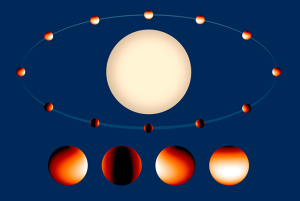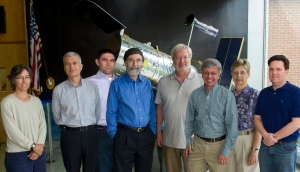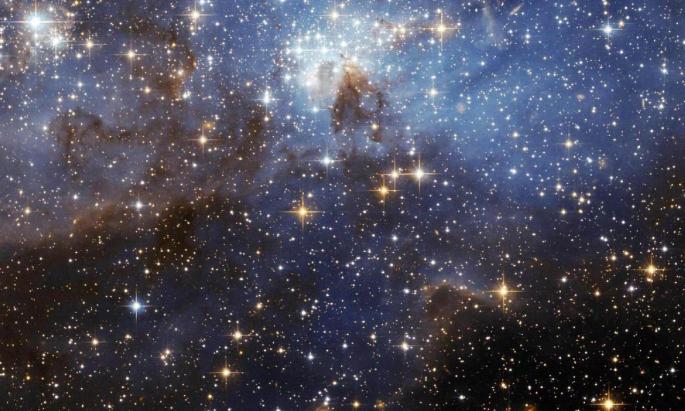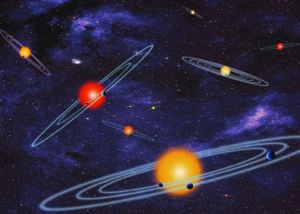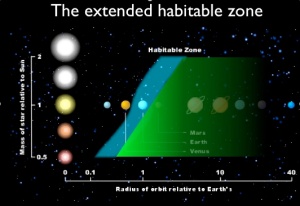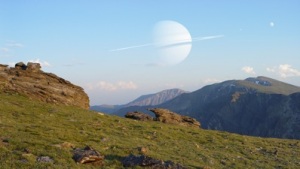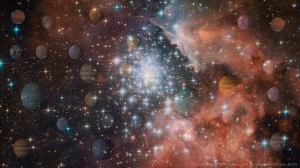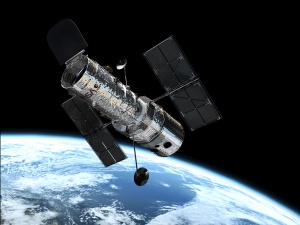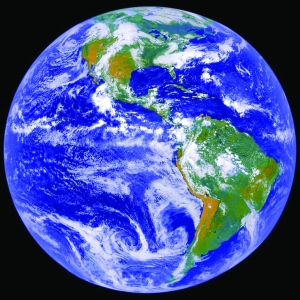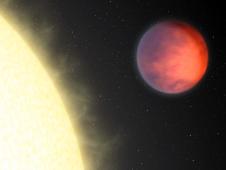NASA space scientists have discovered the first nearly Earth-sized exoplanet lying within the habitable zone of its Sun-like parent star

Credits: NASA/JPL-Caltech/T. Pyle
Space news (July 23, 2015) – 1,400 light-years away in the constellation Cygnus –
Twenty years after proving other planets do exist the human journey to the beginning of space and time draws nearer to finding an Earth-like cradle for a new human Genesis.
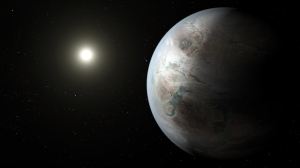
Credits: NASA/JPL-Caltech/T. Pyle
NASA’s Kepler spacecraft has discovered the first nearly Earth-sized exoplanet orbiting within the habitable zone of a star much like our own Sun. Called Kepler-452b and roughly 60 percent bigger than our home planet, this exoplanet is the smallest planet found orbiting at a distance from its parent star where liquid water could exist.
“On the 20th anniversary year of the discovery that proved other suns host planets, the Kepler exoplanet explorer has discovered a planet and star which most closely resemble the Earth and our Sun,” said John Grunsfeld, associate administrator of NASA’s Science Mission Directorate at the agency’s headquarters in Washington. “This exciting result brings us one step closer to finding an Earth 2.0.“
A Star Like Our Sun
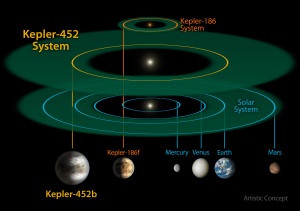
Credits: NASA/JPL-CalTech/R. Hurt
Kepler-452b’s parent star is an older cousin to the Sun, a G2 type star approximately 20 percent brighter, 1.5 billion years older, and 10 percent bigger than Earth’s home star.
“We can think of Kepler-452b as an older, bigger cousin to Earth, providing an opportunity to understand and reflect upon Earth’s evolving environment,” said Jon Jenkins, Kepler data analysis lead at NASA’s Ames Research Center in Moffett Field, California, who led the team that discovered Kepler-452b. “It’s awe-inspiring to consider that this planet has spent 6 billion years in the habitable zone of its star; longer than Earth. That’s substantial opportunity for life to arise, should all the necessary ingredients and conditions for life to exist on this planet.”
A Rocky Exoplanet like Earth?
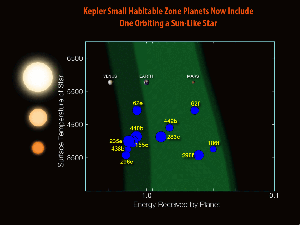
Credits: NASA/N. Batalha and W. Stenzel
Kepler-452b is the twelfth exoplanet the human journey to the beginning of space and time has viewed lying within the habitable zone of its parent star. Data collected by both space and Earth-based telescopes indicates planets of this size are often rocky in nature. Indicating the possibility this exoplanet could have an atmosphere and environment that could act as a cradle for a new human Genesis to begin.
A New Human Genesis!
Humans traveling across spacetime to Kepler-452b would evolve during a voyage lasting thousands or even hundreds of years. Extended hibernation of some type would certainly make the journey easier, but this kind of technology hasn’t been developed. An alternative solution to extended periods living in space during a voyage unlike any humans have undertaken is probably a necessity.
Once we land on Kepler-452b, learning to survive and live on this foreign planet will evolve us once again. Humans are designed to evolve in order to survive living in different environments. We would likely survive as a species, but doing so would change us in ways we can’t begin to imagine.
521 New Candidates for the Exoplanet Zoo
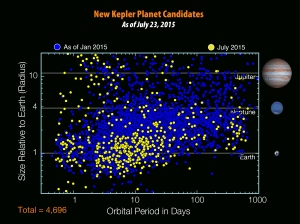
Credits: NASA/W. Stenzel
At the same time, NASA released this news it announced the Kepler mission’s discovery of 521 new exoplanet candidates for the exoplanet zoo. 12 of these candidates orbit their parent star within the habitable zone and nine have home stars similar to the Sun in both size and temperature. Great news for the human desire to locate a second Earth to live on.
“We’ve been able to fully automate our process of identifying planet candidates, which means we can finally assess every transit signal in the entire Kepler dataset quickly and uniformly,” said Jeff Coughlin, Kepler scientist at the SETI Institute in Mountain View, California, who led the analysis of a new candidate catalog. “This gives astronomers a statistically sound population of planet candidates to accurately determine the number of small, possibly rocky planets like Earth in our Milky Way galaxy.”
NASA space scientists will now take a closer look at each of the exoplanet candidates and specifically the ones lying within the habitable zone of their parent star. There could be a second Earth, a cradle for a new human Genesis, waiting to be discovered. An event that would change the course of human history on planet Earth and the way we view ourselves as cosmic beings.
To learn more about the Kepler mission go here.
To learn more about NASA’s space mission visit here.
Learn more about ice geysers erupting from the frozen surface of Saturn’s moon Enceladus helping to create the E ring of the second biggest planet in the solar system.


